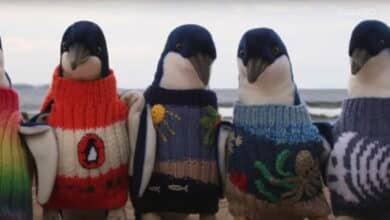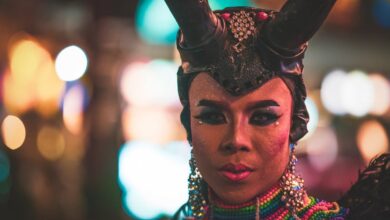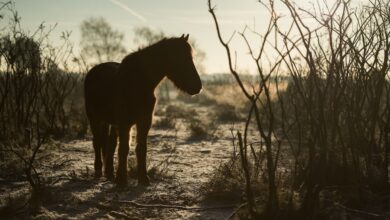Doomsday Preppers
Are There Still Doomsday Preppers?
Picture this: a sudden disaster strikes and brings everyday life to a halt. Did you know that there are millions of American ‘Doomsday Preppers’ preparing for just such scenarios?
Our deep dive into the world of these survivalists will educate you on their motivations, common preparations, and even public perceptions about them.
Intrigued yet? Let’s explore together.
What is Doomsday Prepping?
Doomsday prepping is the practice of preparing for catastrophic events, such as natural disasters or societal collapse, by stockpiling supplies and learning survival skills.
Definition of Doomsday Preppers
Doomsday preppers, a term mainstreamed by the reality television series of the same name, represent an American subculture preparing for catastrophic collapse. They invest in survival gear and essential supplies like food, water, and weapons to withstand any potential apocalyptic scenarios.
Their preparation strategies involve practices such as building underground facilities for storage and accommodation, accumulating years’ worth of resources and procuring communication devices like satellite phones.
These individuals aim to endure any disaster whether its origin is natural or man-made like financial collapses or nuclear winters. The consulting company Practical Preppers evaluates their plans for effectiveness should those worst-case scenarios materialize.
Today’s estimates suggest America has about 3.7 million active doomsday preppers which have significantly influenced many other citizens in the way they prepare for emergencies.
Motivations behind prepping
Doomsday preppers are motivated by a variety of factors that drive them to prepare for potential disasters and emergencies. Some preppers are motivated by the fear of natural disasters, such as hurricanes, earthquakes, or wildfires, which have become more frequent and severe in recent years.
Others are concerned about economic collapse or global pandemics, recognizing the vulnerability of our interconnected world. Political instability also plays a role in motivating some individuals to prepare for uncertain times.
Prepping provides a sense of security and self-sufficiency in the face of potential chaos and violence. Ultimately, these motivations inspire doomsday preppers to stockpile supplies, learn survival skills, and create shelters in order to be ready for whatever may come their way.
Common Preparations of Doomsday Preppers
Doomsday preppers commonly stockpile food and water, build shelters, and learn survival skills.
Stockpiling food and water
Doomsday preppers take the precaution of stockpiling essential supplies to ensure their survival in the event of a disaster.
They gather and store significant quantities of food and water, ensuring they have enough resources to sustain themselves and their families for an extended period.
These stockpiles often include non-perishable items like canned goods, dried fruits, grains, and bottled water. By having these supplies readily available, doomsday preppers believe they can minimize the risk of scarcity and hunger during times of crisis.
Building shelters
Doomsday preppers take building shelters seriously. They invest time and resources to create safe havens for themselves and their families. Underground bunkers, fortified basements, and hidden retreats are common shelter options.
These shelters are equipped with essential supplies such as food, water, medical kits, and even communication devices like satellite phones.
They also prioritize security measures like reinforced doors, surveillance systems, and escape routes. Preppers understand the importance of having a secure location to ride out potential disasters.
- Reinforced doors
- Surveillance systems
- Escape routes
- Essential supplies: food, water, medical kits
- Communication devices: satellite phones
Learning survival skills
Learning survival skills is an essential aspect of being a doomsday prepper. Preppers understand that in the face of disaster, having the knowledge and ability to survive is just as important as having supplies. Here are some key survival skills that doomsday preppers focus on:
- Fire Making: Knowing how to start a fire without matches or a lighter is crucial for warmth, cooking food, and purifying water.
- Shelter Building: Preppers learn various techniques for constructing shelters using natural materials, such as debris huts, lean-tos, or even underground bunkers.
- Navigation: In case of evacuation or getting lost during a disaster, learning how to navigate using maps, compasses, and landmarks is essential.
- First Aid: Having basic first aid knowledge and training can save lives when medical help may not be available in a post-apocalyptic scenario.
- Hunting and Fishing: Being able to hunt for game or catch fish provides a sustainable source of food in the wild.
- Water Purification: Understanding different methods of purifying water ensures access to clean drinking water in emergency situations.
- Self-defense: Learning self-defense techniques and how to handle weapons gives preppers the means to protect themselves and their families if necessary.
- Gardening and Food Preservation: Growing one’s own food through gardening and preserving it through canning or other methods helps ensure long-term sustenance.
- Communication Skills: Developing effective communication skills enables preppers to coordinate with others during emergencies and gather vital information.
- Psychology and Mental Resilience: Preparing mentally for challenging situations is crucial for maintaining calmness, coping with stress, and adapting to new circumstances.
Reasons for Doomsday Prepping
Doomsday Preppers engage in their extreme preparations due to potential natural disasters, economic collapse, global pandemics, and political instability.
Natural disasters
Natural disasters are a key factor that motivates doomsday preppers to prepare for potential apocalyptic scenarios. They understand the destructiveness of events like hurricanes, earthquakes, and wildfires, and are determined to be self-sufficient in the face of such disasters.
Preppers stockpile essential supplies such as food, water, and medical provisions to ensure they can survive in the aftermath of these catastrophic events. By learning survival skills and building shelters, they aim to protect themselves and their families from the chaos that can follow natural disasters.
Their preparations go beyond just immediate needs – some even invest in renewable energy sources to sustain themselves long-term. The threat posed by natural disasters is one of the primary reasons why many individuals choose to become doomsday preppers.
Economic collapse
An economic collapse is one of the reasons why people engage in doomsday prepping. The fear of a financial breakdown, where markets crash, currencies lose value, and unemployment rates skyrocket, drives individuals to prepare for such a scenario.
They stockpile essential supplies like food, water, and other necessities in order to sustain themselves during an economic crisis. Preppers also focus on building self-sufficiency through skills like gardening and raising livestock to lessen their dependence on external resources.
This ensures that they can withstand the potential chaos and uncertainty that may arise from an economic collapse without relying heavily on outside assistance or support networks.
Global pandemics
Global pandemics pose a significant threat to humanity, which is why doomsday preppers take them seriously. These individuals understand the potential for widespread illness and chaos that can be caused by a global outbreak of disease.
In preparation for such a scenario, preppers stockpile essential medical supplies, including masks, gloves, and antibacterial agents. They also ensure they have access to clean water and non-perishable food items to sustain themselves during periods of isolation or quarantine.
Additionally, some preppers invest in alternative energy sources and communication devices to maintain contact with the outside world in case of infrastructure breakdowns. The goal is to be self-sufficient and ready to face any challenges that may arise during a global pandemic.
Political instability
Political instability is another significant reason why doomsday prepping has gained popularity in recent years. The uncertainty and volatility of the political climate have led many individuals to fear the potential breakdown of law and order.
With concerns about civil unrest, riots, or even a collapse of government institutions, people are taking proactive measures to ensure their safety and survival. Doomsday preppers see political instability as a real threat that could lead to chaos and violence, prompting them to stockpile essential supplies and fortify their homes against potential threats.
Criticisms and Perceptions of Doomsday Preppers
The portrayal of Doomsday Preppers in the media often emphasizes extremism and paranoia, leading to negative perceptions of the prepping community.
Portrayal in media
Doomsday preppers have gained notoriety through their portrayal in the media, particularly on reality television shows like Doomsday Preppers. These shows often depict preppers as extreme and paranoid individuals who are preparing for an impending apocalypse.
While there is certainly a small subset of preppers who fit this description, it is important to note that many doomsday preppers are ordinary people who simply want to be prepared for emergencies.
The media has played a significant role in shaping public perceptions of these individuals, often sensationalizing their preparations and focusing on the more extreme aspects of their lifestyle.
Extremism and paranoia
Doomsday preppers are often portrayed in the media as individuals who have extreme views and are overly paranoid. This perception stems from their intense focus on potential disasters and their preparations to survive them.
While some preppers may exhibit extremist behaviors, it is important to recognize that not all doomsday preppers fall into this category. Many preppers are simply taking proactive steps to ensure their own safety and the well-being of their families in case of a catastrophic event.
Their preparedness mindset is driven by a desire to be self-sufficient, rather than being consumed by paranoia or fear.
Societal implications
Doomsday prepping has significant societal implications as it highlights the underlying fears and concerns that many individuals have about potential disasters or catastrophes. The popularity of shows like Doomsday Preppers has led to an increased interest in emergency preparedness among the general population.
More people are now considering stockpiling supplies and learning survival skills as a way to protect themselves and their families in case of unforeseen events.
This growing trend towards preparedness reflects a shifting mindset within society, where people understand the importance of being self-sufficient and ready for any situation.
As more individuals embrace this lifestyle, it can lead to increased community resilience and collective efforts to address disaster readiness on a larger scale.
Societal implications also arise from how doomsday prepping is portrayed in media, particularly reality television shows.
While these programs often focus on extreme cases and highlight paranoia or extremism within the prepper community, they also shed light on valuable skills and knowledge that can be beneficial for everyone.
Doomsday Preppers Reality Show
“Doomsday Preppers” was an American reality show series that captivated audiences with its unique concept and intriguing stories.
The show shed light on a subculture of individuals known as “preppers,” who dedicated their lives to preparing for potential doomsday scenarios.
Each episode showcased different preppers, exploring their strategies, resources, and skills while providing insightful commentary from experts in the field.
Through its 4-season run from 2011 to 2014, the series generated both admiration and criticism while offering viewers a glimpse into this fascinating world.
Understanding Doomsday Preppers
With an increasing number of natural disasters, political unrest, and global pandemics occurring worldwide, it is no surprise that many people are concerned about their safety and well-being in extreme situations.
Doomsday preppers took these concerns to another level by actively preparing themselves for worst-case scenarios such as economic collapse, terrorist attacks, or even alien invasions.
The TV Show Format
Each episode began with colorful visuals illustrating a hypothetical disaster scenario followed by an introduction to different doomsday prepper families across America.
The narrative would present each family’s unique perspective on preparation methods, along with firsthand accounts of past encounters with danger or adversity.
Themes Explored
The show explored various themes related to preparedness ranging from food scarcity to self-defense techniques. It delved into measures taken by preppers regarding water security since access to clean water can become compromised during prolonged disasters like hurricanes or earthquakes.
Moreover, the episodes often featured segments on alternative energy sources like solar panels or wind turbines – technologies that could potentially sustain families when traditional power supplies fail.
Food Storage & Sustainability
One critical aspect discussed was food storage. Many participants emphasized the importance of building stockpiles of non-perishable foods, such as canned goods or freeze-dried items, that could last years without spoiling.
In addition to quantity management, discussions surrounding sustainable farming practices were also a recurring theme.
Preppers explored techniques like hydroponics and aquaponics, aiming to grow their food in controlled environments while minimizing reliance on traditional farming methods.
Self-Defense Strategies
Personal defense was another prominent aspect that doomsday preppers addressed on the show. Participants often showcased their vast collections of firearms and survival weapons as part of their strategy for safeguarding themselves and their families.
Moreover, several episodes explored self-defense classes or training in combat skills such as martial arts or archery – all aimed at helping individuals feel more prepared and confident during challenging times.
Criticisms of “Doomsday Preppers”
While the show gained a considerable following during its run, it was not without its fair share of criticism. Some argued that the series exaggerated the probability and severity of doomsday scenarios, creating unnecessary fear among viewers.
Critics also raised concerns about the ethical implications of hoarding supplies in large quantities while others struggle to access basic necessities.
It was seen by some as promoting an individualistic approach to survival rather than fostering community resilience or cooperation.
Expert Commentary
One notable aspect of “Doomsday Preppers” was the inclusion of expert commentary throughout each episode.
These experts provided valuable insights into various aspects of preparedness, offering alternative perspectives and debunking myths surrounding doomsday theories.
Their contributions added credibility to the show and helped educate viewers on practical strategies for emergency preparedness beyond extreme measures taken by preppers.
Legacy & Impact
Despite its cancellation after four seasons, “Doomsday Preppers” left a lasting impact on popular culture. The show sparked widespread interest in emergency preparation and encouraged individuals to consider their own level of readiness.
Moreover, it paved the way for further exploration into this subculture through other media platforms such as documentaries, podcasts, and even research studies examining psychological motivations behind doomsday beliefs.
Conclusion
Doomsday Preppers is a captivating TV series that sheds light on the world of prepping. Viewers get an inside look at the motivations, preparations, and concerns of individuals who are actively preparing for potential disasters.
By exploring this subculture, we gain insights into their mindset and learn valuable lessons in preparedness for our own lives.
FAQs
1. What are doomsday preppers?
Doomsday preppers are individuals who prepare for catastrophic events by stockpiling supplies, learning survival skills, and creating emergency plans. Moreover, Doomsday Preppers was also an American television reality show.
2. Why do people become doomsday preppers?
People become doomsday preppers because they believe in being self-reliant and want to be prepared for any disaster scenario that could disrupt normal life.
3. What kind of supplies do doomsday preppers typically stockpile?
Doomsday preppers typically stockpile food, water, medical supplies, tools, weapons, and other essential items needed for long-term survival.
4. Is being a doomsday prepper necessary?
Being a doomsday prepper is a personal choice. Some people find comfort in being prepared for emergencies, while others may not see the need or have different ways of preparing themselves.




